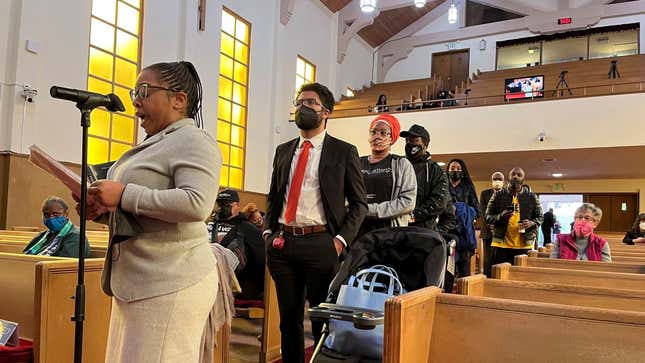California Suggests Reparations for Black Residents, a First Step Toward Nationwide Atonement
After hundreds of years, the California Reparations Task Force is finally making headway in reparations justice for Black residents.
In DepthIn Depth

Just in time for their June 1st deadline, the California Reparations Task Force completed the first step on the path to much-awaited reparations for Black Americans in the state. Led by Chairperson Kamilah Moore, this dedicated nine-member task force has worked for the last two years to chronicle 170 years of systemic oppression by the state and the nation at large. Their research culminated in a 500-page first-in-the-nation report on Wednesday, outlining interim or phrase one recommendations for compensation and retribution to Black Californians.
What we know: Although California entered the U.S. as a freed state in 1850, with over 1,500 enslaved Black residents, the state was inarguably complicit in upholding white supremacist ideals and profiting off the labor of formerly enslaved people, and still benefits from systems of oppression that govern the state—i.e. mass incarceration, educational and medical disadvantages, voter suppression, gentrification, and more. Through extensive research, the committee hopes to refute the common misconception that racism is strictly a Southern state plague and show that the entire nation is infested with the disease.
“We also know that racial violence against African Americans began during slavery, continued through the 1920s, as groups like the Ku Klux Klan permeated local governments and police departments, and peaked after World War II,” Chairperson Moore told Jezebel in a phone interview.
The groundbreaking Assembly Bill 3121, established on September 20th, 2020, and championed by Secretary Shirley Weber and CJEC, charged the task force with documenting and examining centuries of racial discrimination, from the start of slavery in California in the 1600s to today’s inequities experienced by Black American residents. From wage gaps, redlining, and racial profiling to inadequate health care, police brutality, and more, the findings outline the centuries-long damages and then makes recommendations for repair. This interim report will be the first governmental report hyper-focused on addressing the unique needs of the African American community since the 1968 Kerner Commission.
Moore added, “We’ve suggested preliminary action items that are achievable now, like dismantling harmful monuments and relics, free tuition, access to health and housing opportunities, creating an Office of African American Affairs.”
The task force told Jezebel there are five official forms of reparations: compensation, retribution, rehabilitation, satisfaction, and most importantly, guarantee of non-repetition.
Within the report, the committee calls for “comprehensive reparations” and for the state legislature to make significant changes, such as police reform, repairing food deserts, advanced educational redevelopment, homebuying and business financial assistance, and grants to churches and community efforts. This preliminary document answers the question, “Why are reparations owed and necessary?,” and the second document answers, “How should reparations be distributed, and what are systematic changes that will repair the damage done to the Black community?”
-

-

-

-

-

-

-

-

-

-

-

-

-

-

-

-

-

-

-

-

-

-

-

-

-

-

-

-

-

-

-

-

-

-

-

-

-

-

-

-








































